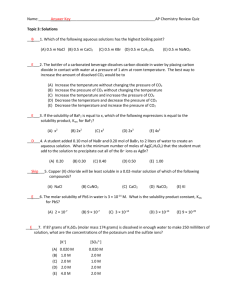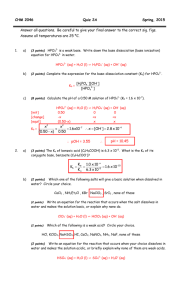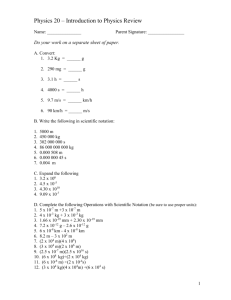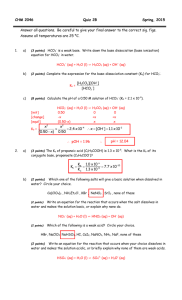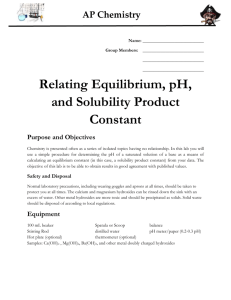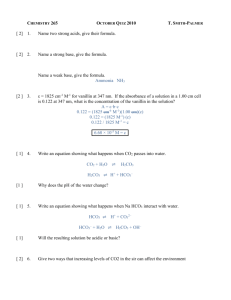Chapter 17
advertisement
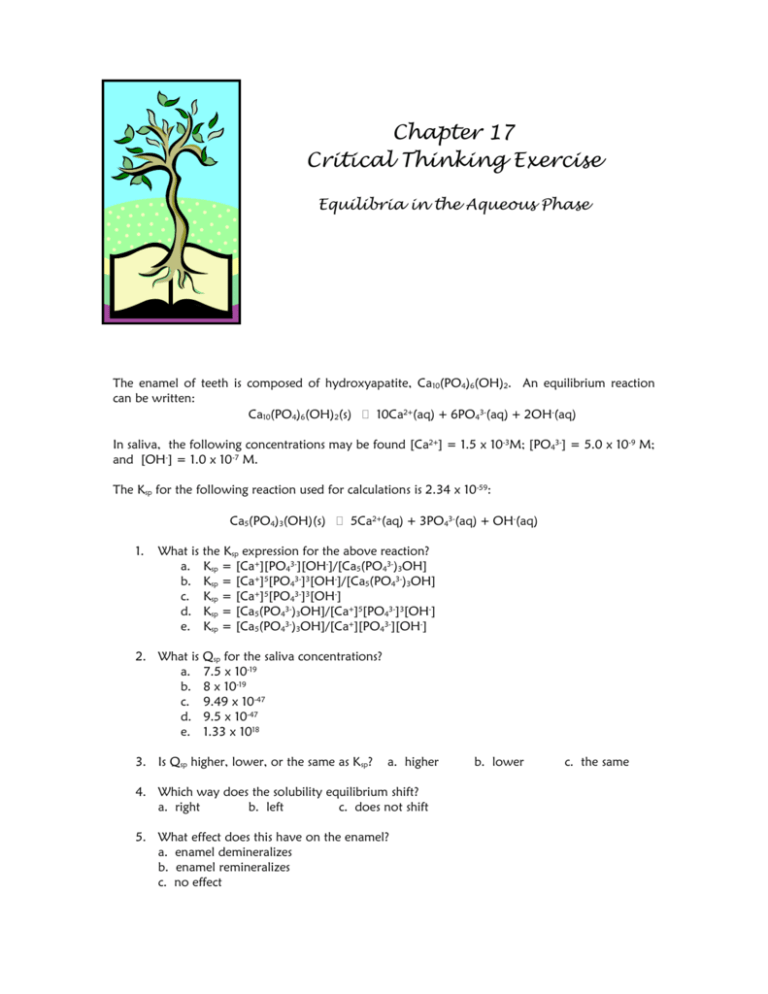
Chapter 17 Critical Thinking Exercise Equilibria in the Aqueous Phase The enamel of teeth is composed of hydroxyapatite, Ca10(PO4)6(OH)2. An equilibrium reaction can be written: Ca10(PO4)6(OH)2(s) 10Ca2+(aq) + 6PO43-(aq) + 2OH-(aq) In saliva, the following concentrations may be found [Ca2+] = 1.5 x 10-3M; [PO43-] = 5.0 x 10-9 M; and [OH-] = 1.0 x 10-7 M. The Ksp for the following reaction used for calculations is 2.34 x 10-59: Ca5(PO4)3(OH)(s) 5Ca2+(aq) + 3PO43-(aq) + OH-(aq) 1. What is the Ksp expression for the above reaction? a. Ksp = [Ca+][PO43-][OH-]/[Ca5(PO43-)3OH] b. Ksp = [Ca+]5[PO43-]3[OH-]/[Ca5(PO43-)3OH] c. Ksp = [Ca+]5[PO43-]3[OH-] d. Ksp = [Ca5(PO43-)3OH]/[Ca+]5[PO43-]3[OH-] e. Ksp = [Ca5(PO43-)3OH]/[Ca+][PO43-][OH-] 2. What is Qsp for the saliva concentrations? a. 7.5 x 10-19 b. 8 x 10-19 c. 9.49 x 10-47 d. 9.5 x 10-47 e. 1.33 x 1018 3. Is Qsp higher, lower, or the same as K sp? a. higher 4. Which way does the solubility equilibrium shift? a. right b. left c. does not shift 5. What effect does this have on the enamel? a. enamel demineralizes b. enamel remineralizes c. no effect b. lower c. the same Chapter 17 6. As the pH of the saliva decreases what happens to the enamel? a. enamel demineralizes b. enamel remineralizes c. no effect 7. Calculate the concentration of Ca2+ from hydroxyapatite in water. a. 4.36 x 10-7 M b. 8.67 x 10-8 M c. 3.47 x 10-7 M d. 6.94 x 10-8 M e. 5.13 x 10-9 M 8. F- ions substitute for OH- ions in hydroxyapatite. Ca5(PO4)3F has a Ksp = 3.16 x 10-60. What is the Ca2+ concentration for fluoroapatite? a. 4.36 x 10-7 M b. 8.67 x 10-8 M c. 3.47 x 10-7 M d. 6.94 x 10-8 M e. 5.13 x 10-9 M 9. A patient's blood test showed a [HCO3-] of 12 mEq/L and pCO2 of 30. mmHg. Calculate the blood pH. a. 7.2 b. 7.3 c. 7.4 d. 7.5 e. 7.7 10. What type of blood disorder does this represent? a. respiratory acidosis b. respiratory alkalosis c. metabolic acidosis d. metabolic alkalosis 2

